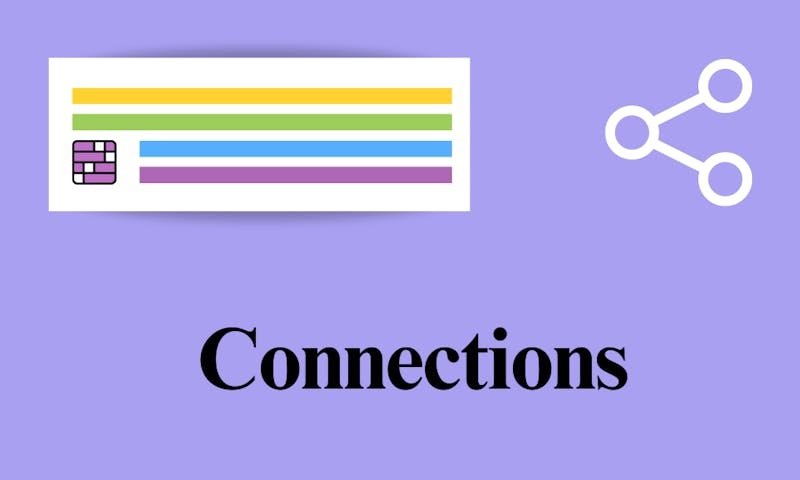What Does Pong Mean in Connections?

Connections
What Does Pong Mean in Connections? In the ever-evolving landscape of digital communication and technology, terminology often takes on new meanings and interpretations. One such term is “pong,” which, depending on the context, can refer to various concepts, particularly in the realm of connections. This article delves into the different meanings and implications of “pong” in various contexts, exploring its origins, significance, and usage in modern communication and technology.
The Origins of Pong
The term “pong” first entered popular culture through the iconic video game released in 1972. Developed by Atari, “Pong” was one of the earliest arcade video games and is widely regarded as the game that launched the video game industry. In “Pong,” two players control paddles on either side of the screen, bouncing a ball back and forth, much like table tennis. The game was simplistic in design but highly addictive, becoming a cultural phenomenon.
Pong in Network Connections
In the context of network connections, “pong” has a specific and technical meaning. It is often used in conjunction with “ping,” forming the “ping-pong” interaction essential in network diagnostics and communication protocols.
Ping and Pong in Networking
- Ping: In networking, “ping” is a utility used to test the reachability of a host on an Internet Protocol (IP) network. It measures the round-trip time for messages sent from the originating host to a destination computer that is echoed back to the source. The term “ping” was inspired by the sonar technology used in submarines, where a sound pulse (ping) is emitted and the time taken for the echo (pong) to return is measured.
- Pong: When a device receives a ping request, it responds with a “pong.” This response confirms that the device is reachable and provides information on the round-trip time. The ping-pong process helps network administrators diagnose connectivity issues, measure latency, and determine network performance.
The Role of Ping-Pong in WebSockets
WebSockets, a protocol for full-duplex communication channels over a single TCP connection, also use the ping-pong mechanism. This mechanism is crucial for maintaining an active connection and detecting if a connection has been lost.
- Ping: A ping frame is sent by one endpoint to prompt the other endpoint to respond.
- Pong: The responding endpoint sends a pong frame back, indicating that the connection is still alive.
This continuous exchange ensures that the connection remains open and functional, enabling real-time communication for applications such as online gaming, live chat, and financial trading platforms.
Pong in Gaming and Virtual Worlds
Beyond its technical usage in networking, “pong” holds significant meaning in gaming and virtual worlds. The original “Pong” game not only revolutionized the gaming industry but also laid the groundwork for multiplayer and competitive gaming.
Pong as a Cultural Icon
The simplicity and success of “Pong” had a profound impact on gaming culture. It introduced the concept of interactive entertainment and paved the way for more complex and immersive games. As a cultural icon, “Pong” is often referenced in discussions about the history of video games and the evolution of digital entertainment.
Modern Interpretations in Gaming
In modern gaming, “pong” can refer to any game or application that involves back-and-forth interaction between players or between a player and the game environment. This interaction is the essence of many multiplayer games, where players engage in competitive or cooperative exchanges, akin to the ping-pong dynamics in networking.
Pong in Social and Collaborative Platforms
In social and collaborative platforms, “pong” can symbolize the dynamic exchange of information and interaction between users. This metaphorical use highlights the back-and-forth communication that is central to these platforms.
Messaging Apps and Social Media
Messaging apps and social media platforms often facilitate “ping-pong” interactions where users send messages (ping) and receive responses (pong). This exchange forms the basis of conversations, discussions, and collaborative efforts.
- Instant Messaging: In instant messaging applications, users engage in rapid exchanges of messages, creating a conversational flow similar to a ping-pong game.
- Collaborative Tools: Tools like Slack, Microsoft Teams, and Trello rely on continuous communication and interaction among team members. The back-and-forth exchanges of ideas, updates, and feedback drive productivity and collaboration.
Pong in IoT and Smart Technologies
The Internet of Things (IoT) and smart technologies also utilize the concept of pong in maintaining device connectivity and communication.
Device Communication and Monitoring
IoT devices often need to verify connectivity with a central server or other devices in the network. This verification process involves sending ping requests and receiving pong responses to ensure the devices are online and functioning correctly.
- Smart Home Devices: Smart home devices, such as thermostats, security cameras, and smart speakers, use ping-pong mechanisms to maintain constant communication with the user and other devices.
- Industrial IoT: In industrial settings, IoT devices monitor machinery, environmental conditions, and operational parameters. Regular ping-pong interactions help detect any connectivity issues or malfunctions promptly.
The Broader Implications of Pong
The broader implications of pong in connections extend beyond specific technologies and applications. The concept symbolizes the importance of continuous interaction, feedback, and validation in various aspects of life and work.
Communication and Feedback
In communication theory, the ping-pong metaphor illustrates the necessity of feedback in effective communication. Just as in network connections and gaming, continuous feedback ensures that the message is received and understood, enabling meaningful exchanges and collaboration.
The Dynamics of Interaction
The dynamics of interaction, represented by the pong concept, emphasize the importance of active engagement and responsiveness. Whether in personal relationships, professional environments, or technological systems, the back-and-forth exchanges foster understanding, cooperation, and progress.
Conclusion
The term “What Does Pong Mean in Connections” has evolved from its origins as a simple video game to a multifaceted concept with significant implications in networking, gaming, social platforms, IoT, and communication theory. Understanding its various meanings and applications provides insight into the dynamic nature of connections in the digital age. From maintaining network connectivity to fostering interactive engagement in gaming and social platforms, pong symbolizes the essential exchange of information and feedback that underpins modern technology and communication. As we continue to advance and innovate, the principles embodied by pong will remain integral to our connected world, What Does Pong Mean in Connections.
FAQs: What Does Pong Mean in Connections?
1. What does “pong” mean in the context of the game Connections?
In the game Connections, “pong” typically refers to a response or reaction to an initial action or “ping.” It represents a back-and-forth interaction or communication between players or elements within the game.
2. How is “pong” used in Connections gameplay?
“Pong” is used to indicate a player’s response to another player’s move or a triggered event in the game. It signifies the completion of an interaction cycle, often requiring strategic thinking and quick reactions.
3. What is the significance of “pong” in Connections?
The significance of “pong” in Connections lies in its role in creating dynamic and interactive gameplay. It ensures continuous engagement and challenges players to anticipate and respond to various game elements effectively.
4. Can you give an example of “pong” in a Connections game scenario?
In a Connections game scenario, if one player sends a “ping” by placing a piece or making a move, the opposing player might respond with a “pong” by countering that move, thus continuing the sequence of interactions.
5. Is “pong” a common term in other games or contexts?
Yes, “pong” is a common term in various games and contexts, often used to describe a responsive action or interaction. It is famously associated with the classic arcade game “Pong,” where players bounce a ball back and forth.







